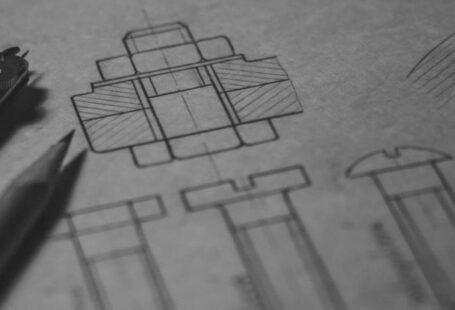The heart of any machinery lies in its gears. These small yet vital components are responsible for transferring power and motion within various mechanical systems. To ensure the efficiency and longevity of machinery, it is crucial to design gears that are durable and reliable. The creation of durable gears in machinery is guided by specific design principles that take into account factors such as material selection, gear geometry, lubrication, and manufacturing processes. By adhering to these principles, engineers can produce gears that withstand the rigors of operation and contribute to the overall performance of the machinery.
Material Selection: The Foundation of Durability
One of the fundamental design principles for creating durable gears is selecting the right materials. The choice of material plays a significant role in determining the strength, wear resistance, and fatigue resistance of the gears. Common materials used for gear manufacturing include steel, cast iron, brass, and various types of alloys. Each material has its own set of properties that make it suitable for specific applications. For example, steel is known for its high strength and wear resistance, making it ideal for heavy-duty gears in industrial machinery. On the other hand, brass is often chosen for its self-lubricating properties and low friction, making it suitable for gears in applications where noise reduction is important.
Gear Geometry: Optimizing Performance and Durability
In addition to material selection, the design of the gear geometry is another crucial aspect that influences the durability of gears in machinery. The shape and size of the gear teeth, as well as the pitch diameter and tooth profile, are all factors that must be carefully considered during the design process. Properly designed gear geometry ensures smooth and efficient power transmission while minimizing wear and noise. For example, involute gear teeth are commonly used in gear design due to their ability to maintain constant speed ratios and reduce sliding friction, leading to increased durability and efficiency.
Lubrication: Ensuring Smooth Operation
Lubrication is essential for reducing friction and wear between gear teeth, thereby prolonging the life of the gears and preventing failures. Proper lubrication forms a protective film between the contacting surfaces of the gears, reducing heat generation and minimizing wear. The selection of the right lubricant, as well as the design of effective lubrication systems within the machinery, are critical aspects of ensuring the durability of gears. Inadequate lubrication can lead to increased friction, overheating, and premature failure of gears, highlighting the importance of proper lubrication practices in gear design.
Manufacturing Processes: Precision and Quality Assurance
The durability of gears in machinery also depends on the precision and quality of the manufacturing processes used to produce them. Modern manufacturing technologies such as CNC machining, gear hobbing, and gear shaping allow for the production of gears with tight tolerances and high accuracy. The use of advanced heat treatment processes, such as carburizing and induction hardening, further enhances the strength and wear resistance of gears. Quality assurance measures, such as inspection and testing, are essential to ensure that the gears meet the required specifications and performance standards.
In Conclusion: Engineering Durability for Longevity
In conclusion, the creation of durable gears in machinery is a complex process that involves careful consideration of material selection, gear geometry, lubrication, and manufacturing processes. By following the design principles outlined above, engineers can develop gears that are not only durable and reliable but also contribute to the overall performance and efficiency of the machinery. Investing in high-quality gears designed with durability in mind is key to ensuring the longevity and optimal functioning of mechanical systems in various industrial and commercial applications.





